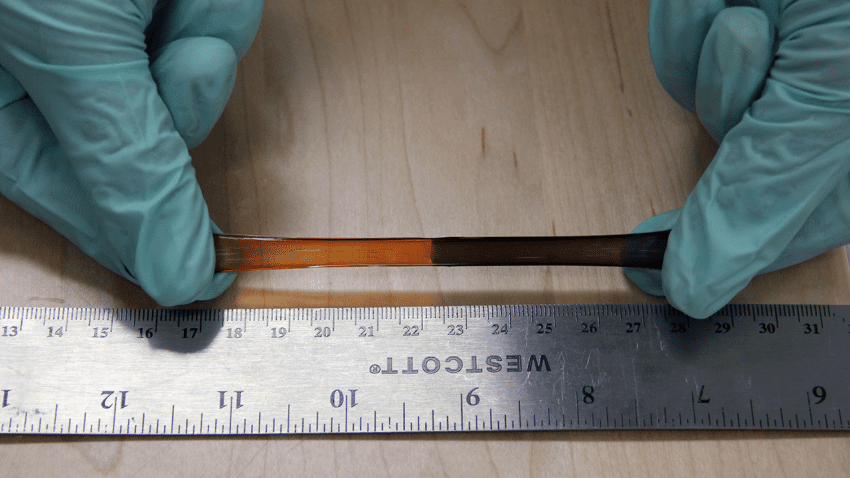There’s nothing like biological muscles, but the synthetic variety is getting mighty close. Scientists made artificial muscles from all sorts of materials, from nanotech yarn that’s 85 times more powerful than natural muscles, to onions that can be bent and stretched much like a muscle. The closest we’ve come to natural muscles is a novel elastomer developed at Stanford University, Palo Alto that can stretch 45 times its length and return to its original size. It’s also self-healing.

Materials chemist Zhenan Bao and colleagues found the right balance of stretching and strength in Fe-Hpdca-PDMS — a rubber-like material comprised of entangled polymer chains made of silicon, oxygen, nitrogen and carbon atoms, all sprinkled with some iron salt.
The iron is essential to the elastomer’s integrity as it bonds to the oxygen and nitrogen, joining polymer chains in the process like tied shoe laces. The polymer chains are thus linked both to themselves and each other allowing the chains to move, and the material as a whole to stretch.
After the material is stretched, the crosslinks return to their original size.
The most remarkable ability of Stanford’s artificial muscle though is by far the self-healing capability. If you poke a hole in the material, the material will cover it up. That’s because the iron atoms on one side of the hole are attracted to the oxygen and nitrogen atoms on the other. In only 72 hours, a micro-hole is self-healed. Even when the researchers cut the material in half, the cut edges joined back together if these were placed close enough, still retaining 90 percent of its stretchability.
It’s not perfect, though. For artificial muscles to be used in a prosthetic or in the soft limb of a robot, these need to be responsive to electric fields. Stanford’s artificial muscle changes in length by only 2% when an electric field is applied, versus 40 percent in the case of biological muscle.
“In our case, the goal was not to make the best artificial muscle, but rather to develop new materials design rules for stretchable and self-healing materials,” Bao explains. “Artificial muscle is one potential application for our materials.”
Combined with artificial skin that can ‘feel’ or even sprout hair and sweat, Bao’s elastomer could form a very interesting artificial system that mimics the real deal. The remarkable self-healing potential makes it an interesting solution for sensors that need to be placed in extreme conditions where damage is common.
Findings appeared in the journal Nature Chemistry.


